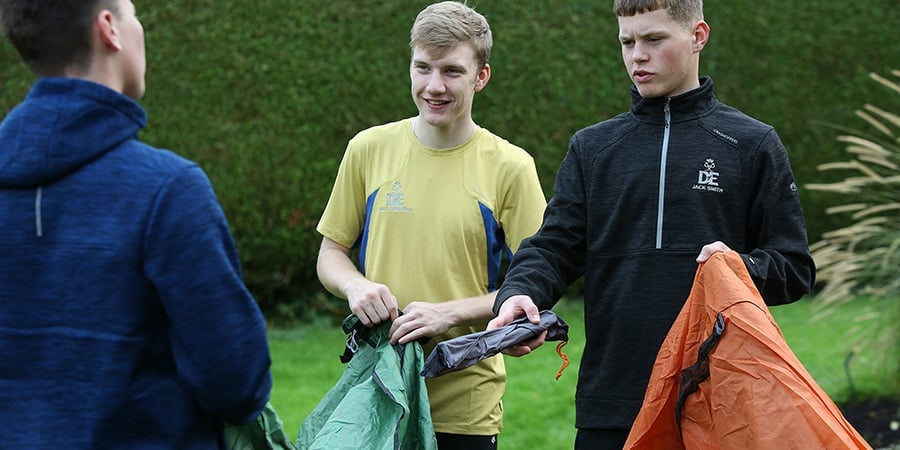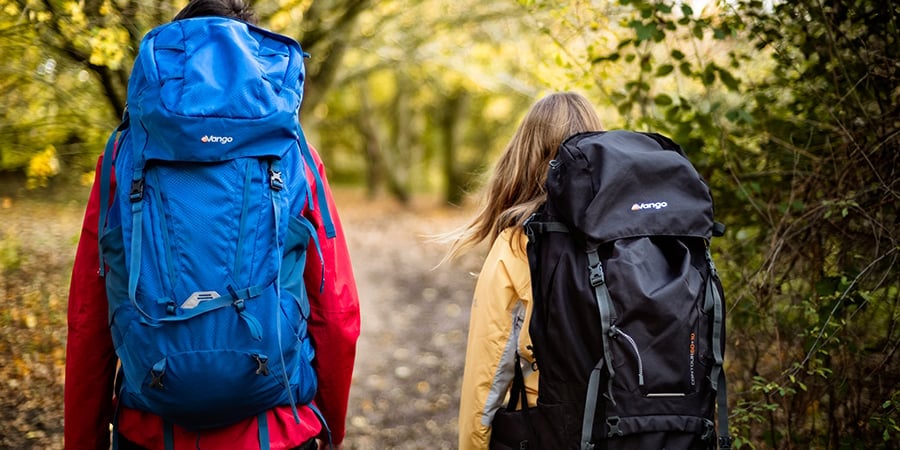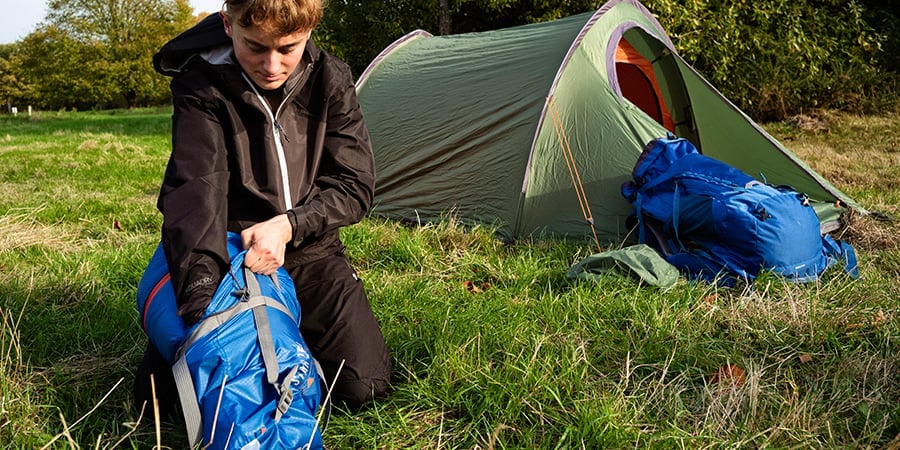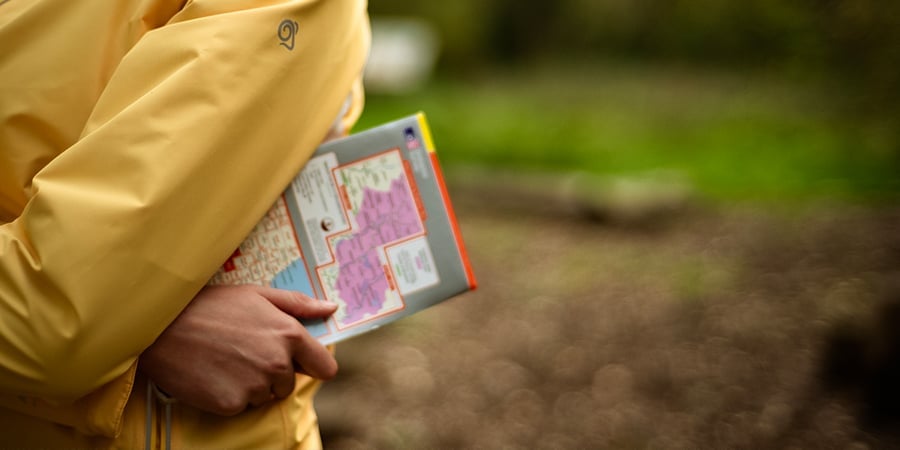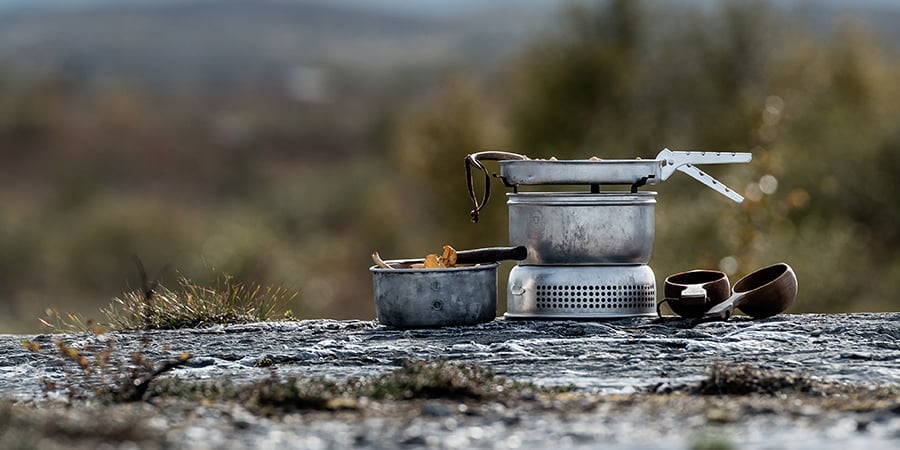Expedition kit care
How to keep your kit lasting for longer
Cleaning, maintaining and storing your expedition kit effectively is the first step towards having a successful kit store.
We’ve pulled together tips on what to do before, during and after expeditions to help keep your kit in good condition, making it last year after year.
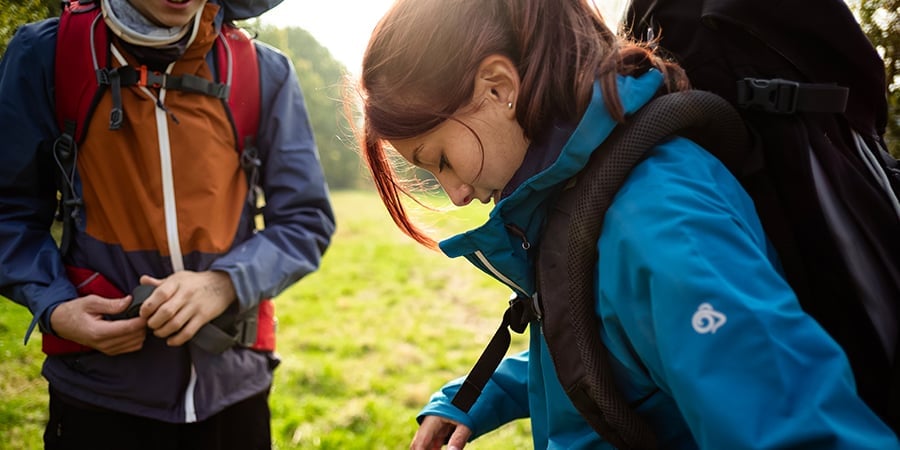
General kit advice
– Keep a small stock of spare parts in your kit store, such as pegs, duct tape and tent pole elastic – this will take the stress out of any last-minute repairs.
– Log any problems that participants have reported to make sure they are dealt with before the kit’s needed again.
– DofE recommended Nikwax waterproofing products can be applied on wet or dry material, so there’s no need to wait until your gear is dry to reproof it.
– It’s good practice to plan the replacement of items. Everything has a life span, so while some items must be replaced due to irreparable damage or loss, the rest will deteriorate over time through wear and tear.

Clothing
– Don’t wash waterproofs with normal washing powders. They will damage your kit, and then it won’t be as effective.
– For best performance wash them with a specialist cleaner. We recommend Nikwax Tech Wash. Then use a reliable proofer, such as Nikwax TX.Direct, which will increase water repellency and improve breathability.
– If you can see dark patches appearing on waterproof jackets or trousers, this is when you need to reproof the kit.
Tents
– If possible, participants should dry the tent before packing it away during their expedition. If not, ensure the tent is dried completely after the expedition; this will stop the tent from getting mouldy and smelly for the next user.
– Unpack and check tents when they are returned to the store. The easiest way to do this is to pitch them, if you have the space.
– If you need to repair your tent or replace broken poles, Vango Spares and Repairs can help. They repair and have parts for all brands of tents, not just Vango, and you’ll also save 10% with DofE code 19561966.
Rucksacks
– All DofE recommended rucksacks come with an adjustable back system. This means they can be tailored to fit participants’ backs, so you don’t need lots of different sizes.
– Most rucksacks aren’t waterproof, so using a waterproof rain cover will help make them last longer.
– Participants should line their rucksacks with a dry bag or thick garden waste bag to protect their kit. Lifeventure dry bags are ideal for this.
Sleeping bags, mats and liners
– Sleeping bags and liners should be cleaned before storing.
– Using sleeping bag liners is a good idea when borrowing sleeping bags, or if you need the extra warmth. We recommend the Lifeventure cotton sleeper liner.
– Don’t use fabric conditioner if you wash your sleeping bag.
– Let the bag dry naturally on a washing line if possible. Otherwise, use a large tumble dryer on a low heat.
– Need to re-fluff your sleeping bag? Add a couple of tennis balls to the dryer!
– Store self-inflating roll mats rolled out with the valve open.
Maps
– Open out all your maps and look for worn or torn areas, especially on the folds.
– Make sure the maps are still legible and that any damage doesn’t obscure any important information, such as roads/junctions or steep drops.
– Laminating your maps or map cases helps prolong their life – we recommend Silva M30 map carry cases.
– Nail polish remover wipes are excellent at removing permanent marker ink, but be sure to let the map dry properly after.
Cookware
– Keep the Trangia burner in the yellow plastic bag provided to stop fuel tarnishing and corroding the stove.
– Any excess fuel should be safely stored or disposed of in an eco-friendly way.
– Participants should clean stoves and cookware after use once they’re cool. This will stop mould growing and keep the cookware in good condition for future groups.
What are your top tips for looking after your expedition kit?
We’d love to hear from you. Email us at [email protected] and you might see your top tip featured on our website.



